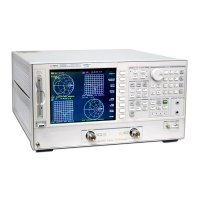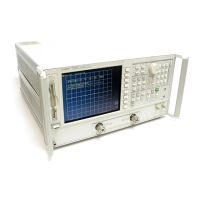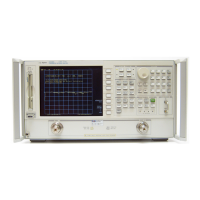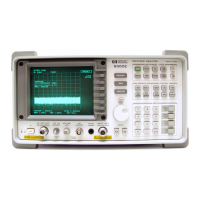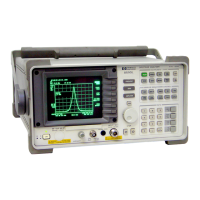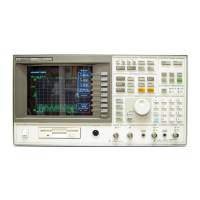5-29
Hardkey/Softkey Reference
Analyzer Functions
turns limit testing on or off. When limit testing is on, the
data is compared with the defined limits at each measured
point. Limit tests occur at the end of each sweep,
whenever the data is updated, when formatted data is
changed, and when limit testing is first turned on.
Limit testing is available for both magnitude and phase
values in Cartesian formats. In polar and Smith chart
formats, the value tested depends on the marker mode and
is the magnitude or the first value in a complex pair. The
message "NO LIMIT LINES DISPLAYED" is displayed in
polar and Smith chart formats if limit lines are turned on.
Five indications of pass or fail status are provided when
limit testing is on. A PASS or FAIL message is displayed
at the right of the LCD. The trace vector leading to any
measured point that is out of limits is set to red at the end
of every limit test, both on a displayed plot and a hard
copy plot. The limit fail beeper sounds if it is turned on. In
a listing of values using the copy menu, an asterisk * is
shown next to any measured point that is out of limits. A
bit is set in the GPIB status byte.
puts the result of a limit test into the display title.
leads to the limit type menu, where one of three segment
types can be selected: sloping line, flat line, or single point.
activates a linear frequency sweep displayed on a
standard graticule with ten equal horizontal divisions.
This is the default preset sweep type.
displays the linear magnitude format. This is a Cartesian
format used for unitless measurements such as reflection
coefficient magnitude ρ or transmission coefficient
magnitude τ, and for linear measurement units. It is used
for display of conversion parameters and time domain
transform data.
displays a readout of the linear magnitude and the phase
of the active marker. Marker magnitude values are
expressed in units and phase is expressed in degrees.
provides access to the Line/Match Menu for TRL/LRM
calibration.
selects the line type for the data trace plot. The default
line type is 7, which is a solid unbroken line.
selects the line type for the memory trace plot. The default
line type is 7.
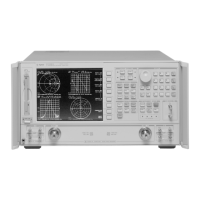
